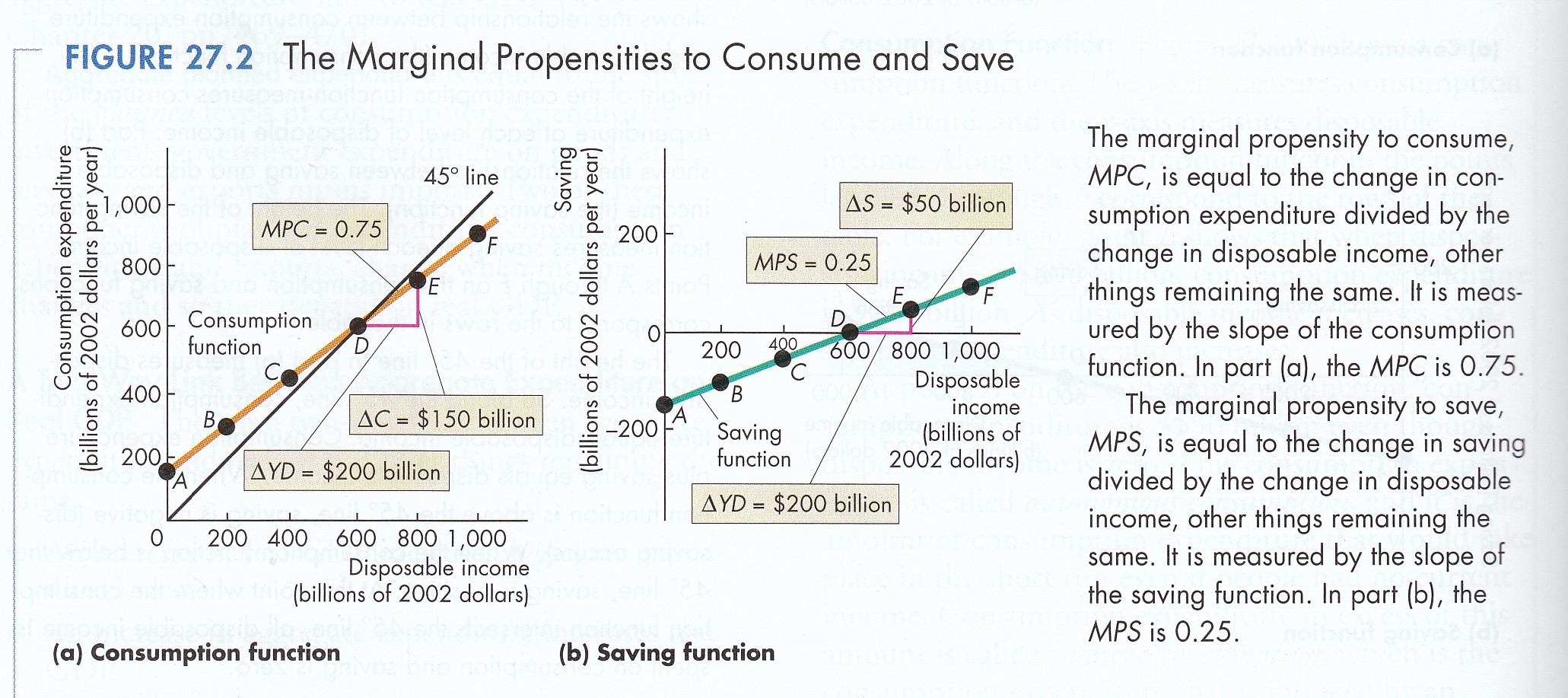Disposable Income
-Income after taxes or net income
-DI = Gross Income - Taxes
-DI = Gross Income - Taxes
2 choices
- With DI households can either
□consume
□save
- With DI households can either
□consume
□save
Consumption
-Household Spending
-The ability to consume is constrained by
□the amount of disposable income
□the propensity to save
-Do households consume if DI=0?
□autonomous consumption
□dissaving
-The ability to consume is constrained by
□the amount of disposable income
□the propensity to save
-Do households consume if DI=0?
□autonomous consumption
□dissaving
APC = C/DI = percent DI that is spent
Saving
- Household NOT spending
- the ability to save is constrained by
□ the amount of disposable income
□ the propensity to consume
-Do households save if DI = 0
□No
-APS = S/DI = percent DI that is not spent
- the ability to save is constrained by
□ the amount of disposable income
□ the propensity to consume
-Do households save if DI = 0
□No
-APS = S/DI = percent DI that is not spent
APC AND APS
- APC + APS = 1
- 1- APC = APS
- 1- APS = APC
- APC > 1 DISSAVING
- APC + APS = 1
- 1- APC = APS
- 1- APS = APC
- APC > 1 DISSAVING
MPC AND MPS
- Marginal propensity to consume
■ C OVER DI
■ percent of every extra dollar earned that is spent
- Marginal prosperity to save
■S over DO
■ percent of every extra dollar earned that is saved
■ C OVER DI
■ percent of every extra dollar earned that is spent
- Marginal prosperity to save
■S over DO
■ percent of every extra dollar earned that is saved
MPC PLUS MPS = 1
1- MPC = MPS
1- MPS = MPC

The spending multiplier effect
-the initial change in spending causes a larger cjange in Aggregate spending or aggregate demand
- Multiplier = change in AD over change in spending
- Multiplier = change in AD over change in spending
The spending multiplier effect
Why it happens? Expenditures and income flow continuously which sets off a spending
Calculating the spending multiplier
Multiplier is 1 over 1-MPC OR 1 OVER MPS
Multiplier is 1 over 1-MPC OR 1 OVER MPS
Multipliers are positive when there is an increase in spending and negative when there is a decrease
Calculating the tax multiplier
- when the government taxes, the multiplier works in reverse-Why? Because now money is leaving the circular flow
- Tax Multiplier = - MPC OVER 1-MPC OR -MPC over MPS
- If there is a tax cut then the multiplier is positive because there is now more money in the circular flow.
No comments:
Post a Comment